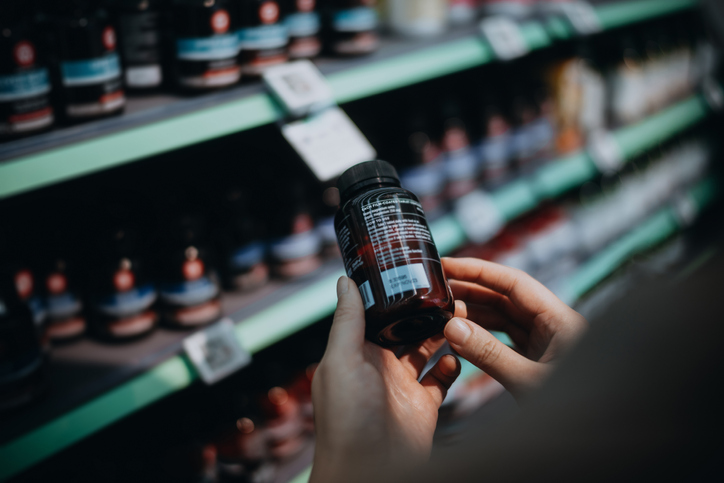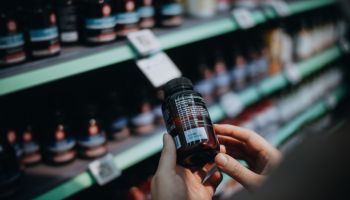
Source: d3sign / Getty
A while back Holly Haze did a blog about reading labels. The ingredients list on any given product can be daunting so she wanted to do a follow up regarding certain popular ingredients that are in almost everything and why you should stay clear of them.
“The importance of knowing the ingredients is pretty simple, Holly says, we should know what is going in our bodies.” If the food on the shelves is loaded with ingredients that block important nutrients from absorption, then a myriad of health problems occur, from exhaustion to disease. Holly says, “I won’t be able to cover it all in one blog, plus…baby steps. It can be overwhelming. So let’s start with the most popular on the no-no list.”
Soy lecithin: It is used as an emulsifier in foods. It reduces the digestion and absorption of calcium, magnesium, copper, iron and zinc and has been known to stunt growth in children. The extraction process that’s
required to get soy lecithin from soybeans uses hexane, a solvent that’s also used for glues and
varnishes. Supposedly, it’s removed through another multi-step process but there can be hexane residue
leftover. To be fair, soy lecithin does come with benefits, but for the most part, it’s not the best of ingredients.
Natural or artificial flavors: WHAT DOES THAT MEAN? The problem with this on a label is it could mean anything : fetal cells, pig bones, msg, chemicals, etc. About 95% of anything in a bottle, can or box will contain ingredients to make you come back for more. Holly chimes in…”Oftentimes people assume “natural” means it is ok, when the manufacturer can get away with putting that on the label because, well pig and human parts ARE natural. That doesn’t necessarily mean we should consume them. Side note…look up rennet. It is an ingredient in many creamy and cheesy dips. Nevermind, I got you….it comes from the inner lining of a newly born calf. It’s totally natural, yep…and totally gross. KNOW THE INGREDIENTS.”
Aspartame: It is no mystery that studies have been covered up (insert shock emoji) to deem this safe for consumption. Aspartame has been linked to neurological issues, digestive issues, mood changes, headache, dizziness, diabetes and Parkinson’s.
Citric Acid: At one time it was derived from real citrus. In the 1970’s, it became derived from GMO mold and GMO corn syrup. Mold can be very harmful as you can imagine: sore throat, bloating, tonsil swelling, erosion of enamel on teeth. It has an even worse nasty little cousin called sodium benzoate…so let’s look in to that.
Sodium benzoate: This acts as a preservative against mold and is horrible for us. By itself, it is seemingly safe, but once it enters our bodies it breaks down in to benzene which is a carcinogen and also causes ADHD. It deprives human cells of oxygen, all while it breaks down the immune system and causes blood cancer. It is easily found in most conventional foods, especially the acidic ones, including pickles, peppers, soy sauce, ketchup, salad dressings, jams, most condiments, vinegar, fruit juices, salsa, dips, shredded cheese and diet or regular soda. You may also see it listed on your mouthwash, toothpaste, cough syrup, cream, lotion and hundreds of cosmetic products. Holly says, “When you see the phrases, “to preserve freshness,” and “… as a preservative” – watch out! You could be shortening your life. Food is SUPPOSED to perish, it should not be preserved indefinitely in a jar with toxic food dyes and known carcinogens.”
Take aways: TRY to read labels and at least make an attempt to research the ingredients. We should value our bodies and our children’s bodies enough to know what is going in their systems.
Holly adds, “There are so many more with HUGE red flags, but this is a good start as these are the most common culprits. I will revisit more ingredients in a future blog”.















